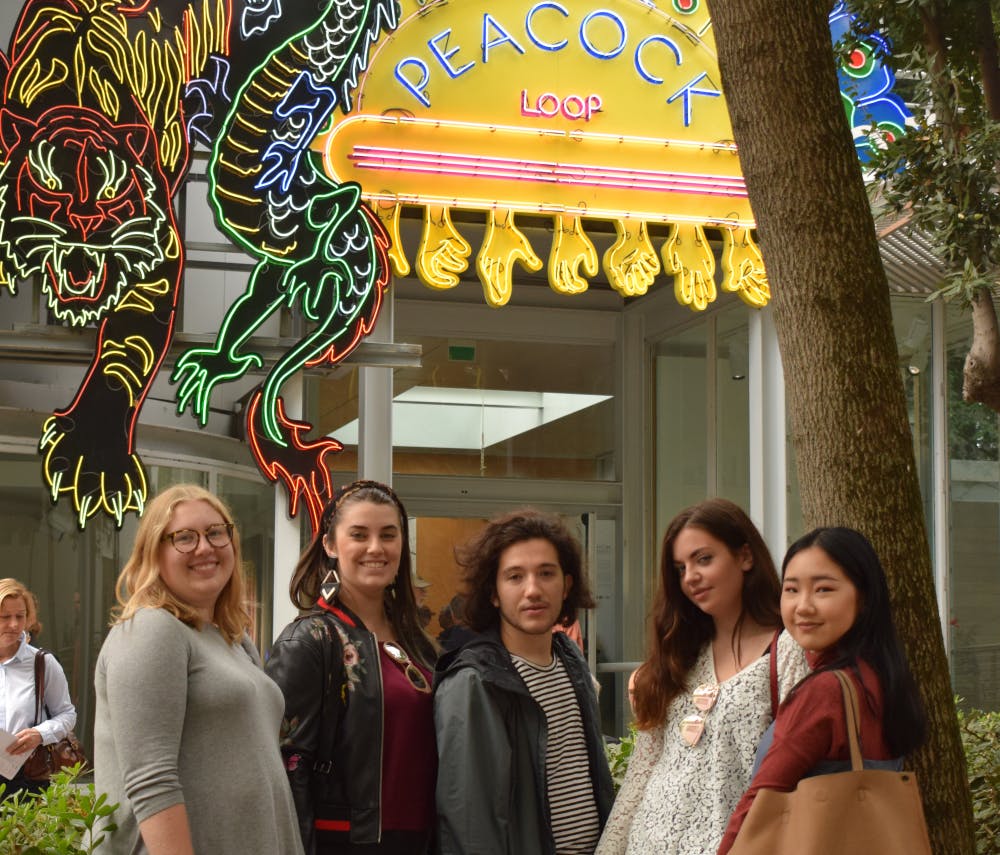There are two types of courses offered at Penn: those that take you on a trip to Europe and those that don't.
When you were at home chillin' over fall break, a group of six History of Art majors (myself included) traveled to Venice, Italy as part of this year's Spiegel–Wilks seminar taught by Professor Gwendolyn Dubois Shaw. The trip focused on visiting the 57th Venice Biennale, the oldest and most well–regarded biannual international contemporary art exhibition. Prior to the trip, we read about the history and criticism of the biennale, and discussed its multifaceted role in contemporary society.
Established in 1895, the Venice Biennale welcomes visitors twice a year to the water city to see a largely country–based showcase of contemporary art. A total of 86 countries and 120 artists participated in this year's Biennale in various capacities. There are two main venues of the Biennale: the Giardini, which is the traditional site of the exhibition, and the Arsenale, which had been a huge complex of construction sites. Countries such as France, Egypt and Japan have built their stand–alone pavilions in the Giardini, while countries like South Africa, Singapore and Ireland exhibit in their reserved space inside the Arsenale.
Like an Olympics in the art world, each participating country is responsible for organizing its own pavilion, from selecting the artists and curators, to installing and maintaining the exhibition. Depending on the intention of the country, each pavilion could center around a common theme explored by multiple artists, or could exhibit a body of works by one single artist. On the other hand, a curator is chosen for each edition of the Biennale to organize two group shows in Giardini and Arsenale, respectively. There are also dozens of country pavilions spread throughout the city and hundreds of collateral events.
A spectacle as it is, the Venice Biennale has long received both harsh criticism and avid support. People love it as an experimental alternative to museums and view it as a free platform for discussing issues like politics, identity and globalization. People hate it for its capitalist and elitist nature and believe it embodies commercially–driven festivalism and entertainment that is dangerous to serious art development.
I was amazed by the fact that a city known for its tourism would have dozens of physical buildings concentrated on one part of the island solely dedicated to an international art event that runs for half of the year. The economic and cultural impact must have proved itself as the Venice Biennale has survived and maintained its influence for over 100 years. In this year's Biennale, the most prominent issue for me among country pavilions was immigration and the issues of statehood and stateless. Whether told in first–person narratives or by Hollywood superstars, whether hidden in the street signs of "Anonymous, Stateless, Immigrants Pavilion," the personal stories of immigrants come in a variety of forms and are selected to be the focus of many countries.
The group shows are organized thematically into nine sections: for example, Pavilion of Time and Infinity, Pavilion of Colors, and Earth Pavilion. Taken as a whole, the group shows could be seen as a 2017 survey of international contemporary art production. Artists from different countries and backgrounds are juxtaposed with one another to be examined under the title of each section. The international nature of the Venice Biennale seems to grant its win on diversity; however, Artsy.net points out the gender and racial parity among its participating artists in the group shows: Women artists comprise 35% of the participants; 41% of the artists were born in Europe; and white artists take up 57%. Although statistics do not tell the full story, they're still sending a powerful message about representation and recognition of artists with certain backgrounds.
Christine Marcel, curator of this year's Venice Biennale states in the official statement, "...Art bears witness to the most precious part of what makes us human, at a time when humanism is precisely jeopardized." As the Spiegel–Wilks seminar goes on, we will continue the discussion about identity and difference, including race, gender, class and sexuality.

